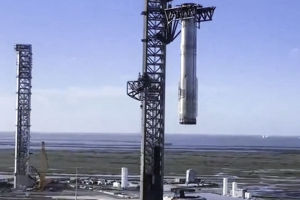Science fiction has long fueled humanity's fascination with the vastness of the universe.
Central to many tales of intergalactic discovery are exploration vehicles—technological marvels designed to navigate uncharted planets, probe cosmic phenomena, and ensure survival in the most hostile environments.
While fictional, these vehicles often inspire real-world innovation and deepen our understanding of what it takes to explore the cosmos.
The Role of Sci-Fi Vehicles in Space Exploration
Exploration vehicles in sci-fi serve as both transportation and survival tools, designed to traverse the harsh conditions of space and alien worlds. They range from nimble rovers to massive interstellar crafts, each equipped with features tailored to their mission. While these vehicles are often creations of imagination, they address real scientific challenges, such as navigating unpredictable terrains, ensuring life support, and surviving extreme conditions.
Inspiration for Real-World Technology
Sci-fi exploration vehicles have influenced real-world advancements in robotics and aerospace engineering. NASA's rovers, such as Curiosity and Perseverance, resemble scaled-down versions of vehicles imagined in stories. Equipped with advanced cameras, scientific instruments, and autonomous navigation systems, they echo the self-sufficiency and intelligence depicted in sci-fi.
Similarly, futuristic spacecraft designs, like Elon Musk's Starship, borrow from the sleek, multi-functional aesthetics of fictional crafts. Features like reusable components and modularity reflect the practicality envisioned in science fiction. These vehicles aim to make long-distance space travel feasible, turning fiction into reality.
Science Fiction Inspires the Future of Science | National Geographic
Video by National Geographic
Key Features of Sci-Fi Exploration Vehicles
Advanced Mobility: Sci-fi vehicles are often depicted with versatile movement capabilities, from hovering over alien landscapes to burrowing through ice.
Energy Independence: Many vehicles in sci-fi rely on renewable or infinite energy sources, such as fusion reactors. This concept inspires real-world efforts to develop sustainable power solutions for space missions.
Self-Sufficiency: Equipped with artificial intelligence, repair systems, and resource extraction tools, sci-fi vehicles highlight the importance of autonomy.
Multi-Environmental Adaptation: From vacuum-sealed designs to amphibious capabilities, sci-fi vehicles adapt to diverse conditions.
The Human Element
Beyond technology, sci-fi vehicles often reflect humanity's indomitable spirit. They represent our drive to push boundaries, explore the unknown, and seek answers to existential questions. Fictional vehicles embody the hope that no matter how far we venture, our ingenuity will carry us through.
A Bridge Between Fiction and Reality
Sci-fi exploration vehicles serve as imaginative tools to envision what might be possible in the future. While they start as stories, they provide a framework for tackling the complex challenges of space exploration. With every rover launched and spacecraft designed, humanity takes another step closer to turning these visions into reality, using them to unlock the mysteries of the universe.


